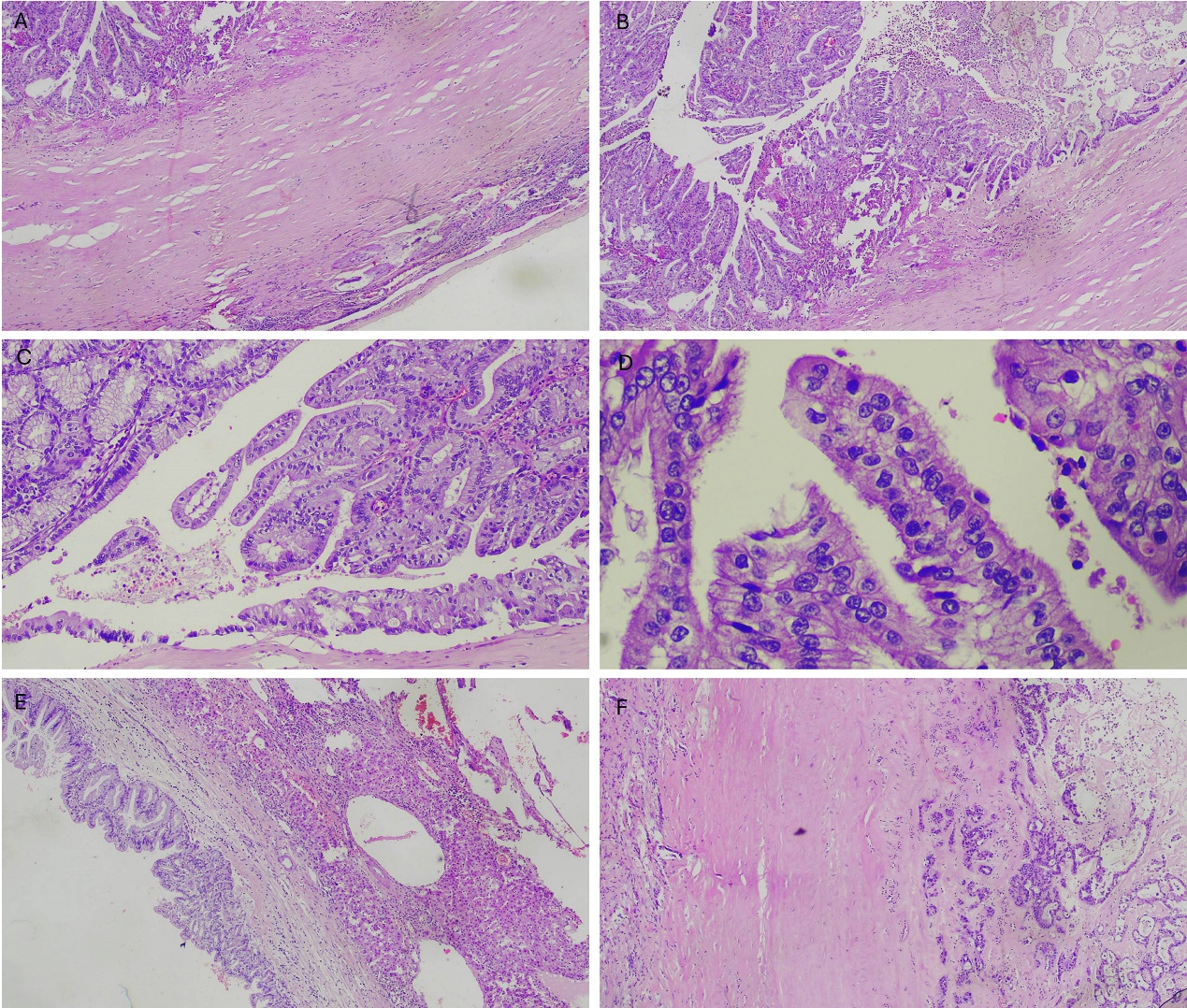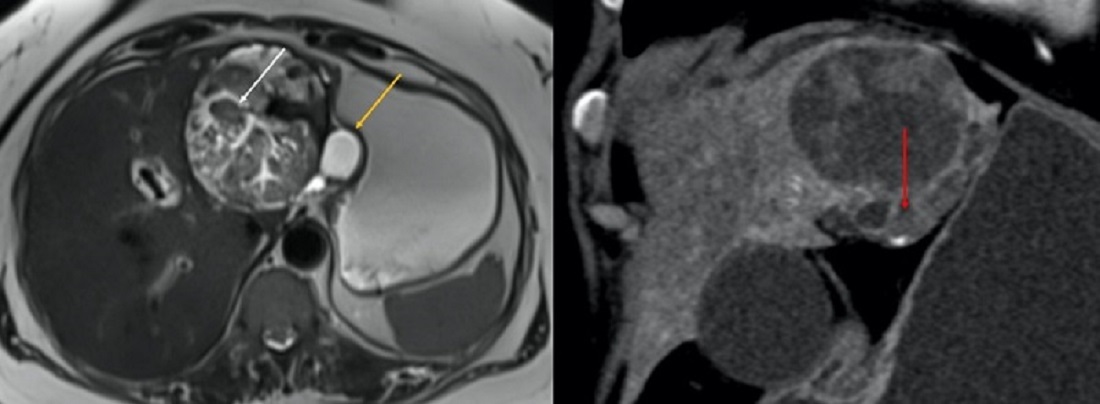Sunday Poster Session
Category: Biliary/Pancreas
P0240 - Nodules in Biliary Tree: Decoding Rare Neoplastic Phenomenon
Sunday, October 26, 2025
3:30 PM - 7:00 PM PDT
Location: Exhibit Hall

Saumya Ahluwalia, MBBS (she/her/hers)
Dayanand Medical College and Hospital
Rancho Cucamonga, CA
Presenting Author(s)
Saumya Ahluwalia, MBBS1, Srishti Ahluwalia, MBBS1, Bhavik Sethi, MBBS2, Raghav Chanday, MBBS3, Ramit Mahajan, MBBS, MD, DM3, Aminder Singh, MBBS, MD3
1Dayanand Medical College and Hospital, Rancho Cucamonga, CA; 2Apollo Hospital, New Delhi, Delhi, India; 3Dayanand Medical College and Hospital, Ludhiana, Punjab, India
Introduction: Intraductal papillary neoplasm of the bile duct (IPNB) is rare, premalignant disease accounting for 4%-15% of bile duct tumors. The incidence is higher in East Asia. Hepatolithiasis and liver fluke infections are probable risk factors. However, most IPNBs are sporadic. As these tumors were morphologically similar to intraductal papillary mucinous neoplasm (IPMN) of pancreas; initially they were considered as intraductal papillary neoplasm of liver. As similar tumors were also observed in extrahepatic bile duct, these tumors were officially renamed in 2010 in revised World Health Organization Classification of Tumors of the Digestive System as IPNB. It is important to recognise this recently characterized entity as IPNB has better prognosis than cholangiocarcinoma after complete surgical resection despite invasive features.
Case Description/
Methods: A 52-year-old female presented with recurrent right upper quadrant pain for 2 months. There was no history of fever, jaundice or anorexia and weight loss. Laboratory investigations revealed normal blood count, normal inflammatory markers and mildly increased gamma-glutamyl transferase.
Ultrasonography showed a complex cystic lesion in left lobe of liver. Further characterisation of the lesion was done by contrast-enhanced computed tomography (CECT) and magnetic resonance cholangiopancreatography (MRCP). CECT and MRCP revealed a complex cystic mass with intraluminal enhancing polypoidal projections and dilated peripheral bile ducts communicating with cystic mass suggestive of intraductal papillary neoplasm of the bile duct (IPNB) (Figure 1). The patient underwent left lateral segmentectomy of liver.
Histopathology showed large cystically dilated intrahepatic bile ducts with presence of papillary and glandular configuration. The papillae were lined by tumor cells with invasion of underlying subepithelial stroma confirming diagnosis of IPNB with invasive carcinoma (Figure 2).
Discussion: IPNB is a preinvasive neoplasm typically affecting middle aged adults. It can involve intra- as well as extrahepatic biliary tree and is characterised by presence of intraluminal projections with fibrovascular core. Complete surgical resection remains the primary treatment strategy, necessitating comprehensive multimodality preoperative evaluation for an ideal textbook outcome. This case of IPNB underscores the complexity of diagnosis, emphasizing the importance of comprehensive imaging and surgical intervention in managing this rare biliary neoplasm.

Figure: Figure 1. MR axial T2-weighted image reveals a well-defined T2-hyperintense mass with internal intermediate signal nodular projections (white arrow) in left lobe of liver. There is focal dilatation of the biliary channel adjacent to the lesion (yellow arrow). Nodular projections were noted in the dilated biliary channel also. Coronal CECT image shows nodular projections in the lesion and adjacent dilated bile duct (red arrow)

Figure: Figure 2. Histopathology of resected liver segment (A, B) shows large cystically dilated intrahepatic bile duct with presence of tumor [hematoxylin–eosin (H&E) x40]; (C) presence of tumor with papillary and glandular configuration (H&E x100), (D) papillae lined by tumor cells with low grade nuclear features (H&E x400), (E) tumor present in the intrahepatic bile duct and (F) tumor cells invading the underlying subepithelial stroma (H&E x40)
Disclosures:
Saumya Ahluwalia indicated no relevant financial relationships.
Srishti Ahluwalia indicated no relevant financial relationships.
Bhavik Sethi indicated no relevant financial relationships.
Raghav Chanday indicated no relevant financial relationships.
Ramit Mahajan indicated no relevant financial relationships.
Aminder Singh indicated no relevant financial relationships.
Saumya Ahluwalia, MBBS1, Srishti Ahluwalia, MBBS1, Bhavik Sethi, MBBS2, Raghav Chanday, MBBS3, Ramit Mahajan, MBBS, MD, DM3, Aminder Singh, MBBS, MD3. P0240 - Nodules in Biliary Tree: Decoding Rare Neoplastic Phenomenon, ACG 2025 Annual Scientific Meeting Abstracts. Phoenix, AZ: American College of Gastroenterology.
1Dayanand Medical College and Hospital, Rancho Cucamonga, CA; 2Apollo Hospital, New Delhi, Delhi, India; 3Dayanand Medical College and Hospital, Ludhiana, Punjab, India
Introduction: Intraductal papillary neoplasm of the bile duct (IPNB) is rare, premalignant disease accounting for 4%-15% of bile duct tumors. The incidence is higher in East Asia. Hepatolithiasis and liver fluke infections are probable risk factors. However, most IPNBs are sporadic. As these tumors were morphologically similar to intraductal papillary mucinous neoplasm (IPMN) of pancreas; initially they were considered as intraductal papillary neoplasm of liver. As similar tumors were also observed in extrahepatic bile duct, these tumors were officially renamed in 2010 in revised World Health Organization Classification of Tumors of the Digestive System as IPNB. It is important to recognise this recently characterized entity as IPNB has better prognosis than cholangiocarcinoma after complete surgical resection despite invasive features.
Case Description/
Methods: A 52-year-old female presented with recurrent right upper quadrant pain for 2 months. There was no history of fever, jaundice or anorexia and weight loss. Laboratory investigations revealed normal blood count, normal inflammatory markers and mildly increased gamma-glutamyl transferase.
Ultrasonography showed a complex cystic lesion in left lobe of liver. Further characterisation of the lesion was done by contrast-enhanced computed tomography (CECT) and magnetic resonance cholangiopancreatography (MRCP). CECT and MRCP revealed a complex cystic mass with intraluminal enhancing polypoidal projections and dilated peripheral bile ducts communicating with cystic mass suggestive of intraductal papillary neoplasm of the bile duct (IPNB) (Figure 1). The patient underwent left lateral segmentectomy of liver.
Histopathology showed large cystically dilated intrahepatic bile ducts with presence of papillary and glandular configuration. The papillae were lined by tumor cells with invasion of underlying subepithelial stroma confirming diagnosis of IPNB with invasive carcinoma (Figure 2).
Discussion: IPNB is a preinvasive neoplasm typically affecting middle aged adults. It can involve intra- as well as extrahepatic biliary tree and is characterised by presence of intraluminal projections with fibrovascular core. Complete surgical resection remains the primary treatment strategy, necessitating comprehensive multimodality preoperative evaluation for an ideal textbook outcome. This case of IPNB underscores the complexity of diagnosis, emphasizing the importance of comprehensive imaging and surgical intervention in managing this rare biliary neoplasm.

Figure: Figure 1. MR axial T2-weighted image reveals a well-defined T2-hyperintense mass with internal intermediate signal nodular projections (white arrow) in left lobe of liver. There is focal dilatation of the biliary channel adjacent to the lesion (yellow arrow). Nodular projections were noted in the dilated biliary channel also. Coronal CECT image shows nodular projections in the lesion and adjacent dilated bile duct (red arrow)

Figure: Figure 2. Histopathology of resected liver segment (A, B) shows large cystically dilated intrahepatic bile duct with presence of tumor [hematoxylin–eosin (H&E) x40]; (C) presence of tumor with papillary and glandular configuration (H&E x100), (D) papillae lined by tumor cells with low grade nuclear features (H&E x400), (E) tumor present in the intrahepatic bile duct and (F) tumor cells invading the underlying subepithelial stroma (H&E x40)
Disclosures:
Saumya Ahluwalia indicated no relevant financial relationships.
Srishti Ahluwalia indicated no relevant financial relationships.
Bhavik Sethi indicated no relevant financial relationships.
Raghav Chanday indicated no relevant financial relationships.
Ramit Mahajan indicated no relevant financial relationships.
Aminder Singh indicated no relevant financial relationships.
Saumya Ahluwalia, MBBS1, Srishti Ahluwalia, MBBS1, Bhavik Sethi, MBBS2, Raghav Chanday, MBBS3, Ramit Mahajan, MBBS, MD, DM3, Aminder Singh, MBBS, MD3. P0240 - Nodules in Biliary Tree: Decoding Rare Neoplastic Phenomenon, ACG 2025 Annual Scientific Meeting Abstracts. Phoenix, AZ: American College of Gastroenterology.
